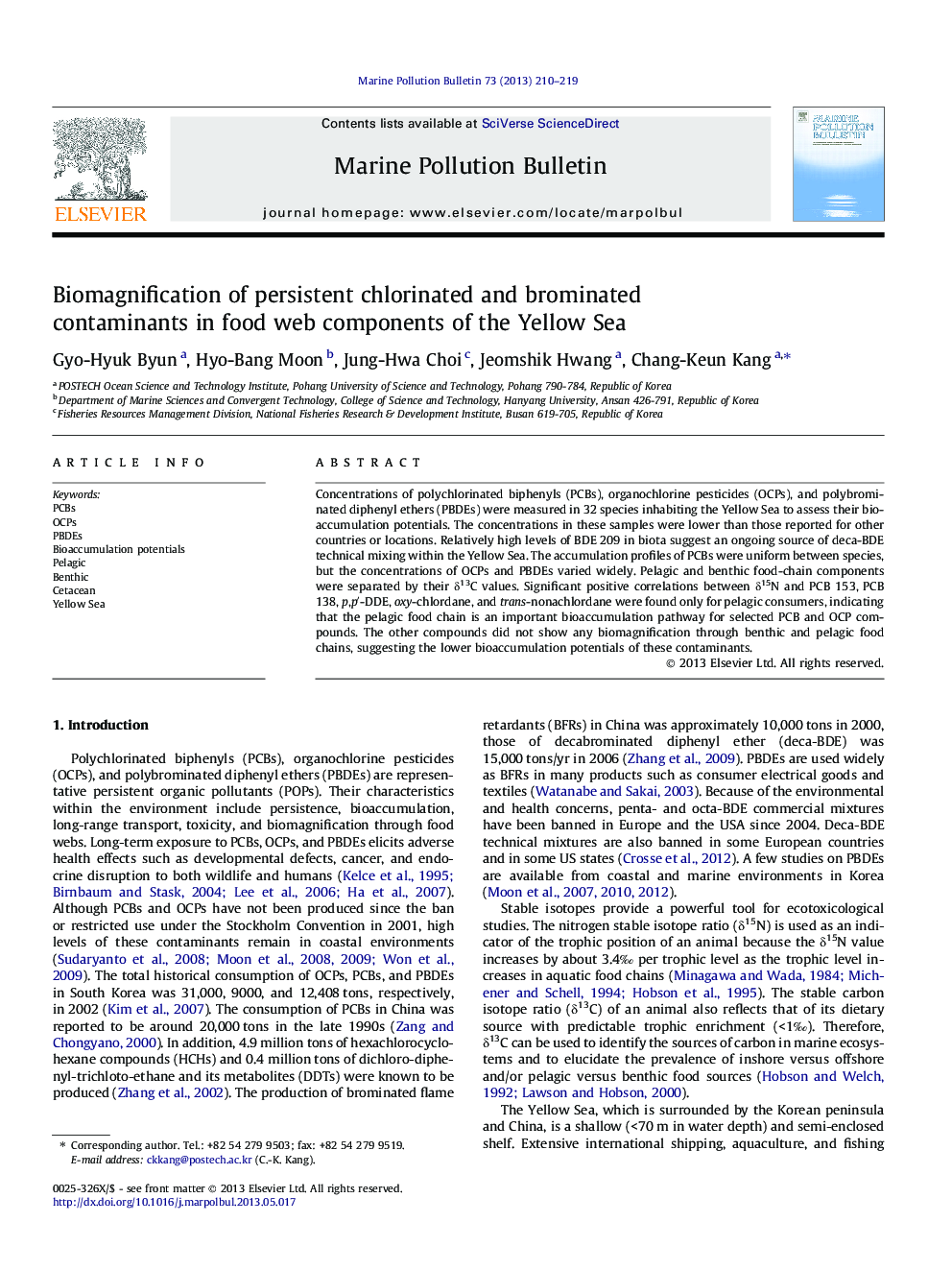| Article ID | Journal | Published Year | Pages | File Type |
|---|---|---|---|---|
| 6359439 | Marine Pollution Bulletin | 2013 | 10 Pages |
â¢PCBs, OCPs, and PBDEs were analyzed for 32 marine species in the Yellow Sea.â¢Their bioaccumulation potentials were assessed in combination with stable isotopes.â¢Pelagic and benthic food-chain components were separated by their δ13C values.â¢Pelagic food chain was a major bioaccumulation pathway for selected PCBs and OCPs.â¢The other compounds displayed low bioaccumulation potentials through food chains.
Concentrations of polychlorinated biphenyls (PCBs), organochlorine pesticides (OCPs), and polybrominated diphenyl ethers (PBDEs) were measured in 32 species inhabiting the Yellow Sea to assess their bioaccumulation potentials. The concentrations in these samples were lower than those reported for other countries or locations. Relatively high levels of BDE 209 in biota suggest an ongoing source of deca-BDE technical mixing within the Yellow Sea. The accumulation profiles of PCBs were uniform between species, but the concentrations of OCPs and PBDEs varied widely. Pelagic and benthic food-chain components were separated by their δ13C values. Significant positive correlations between δ15N and PCB 153, PCB 138, p,pâ²-DDE, oxy-chlordane, and trans-nonachlordane were found only for pelagic consumers, indicating that the pelagic food chain is an important bioaccumulation pathway for selected PCB and OCP compounds. The other compounds did not show any biomagnification through benthic and pelagic food chains, suggesting the lower bioaccumulation potentials of these contaminants.
